-
 Bitcoin
Bitcoin $81,757.9373
7.10% -
 Ethereum
Ethereum $1,613.1658
11.85% -
 Tether USDt
Tether USDt $0.9996
0.01% -
 XRP
XRP $1.9827
10.64% -
 BNB
BNB $575.1635
4.81% -
 USDC
USDC $0.9998
-0.01% -
 Solana
Solana $115.1337
9.20% -
 Dogecoin
Dogecoin $0.1549
8.93% -
 TRON
TRON $0.2398
5.53% -
 Cardano
Cardano $0.6099
8.58% -
 UNUS SED LEO
UNUS SED LEO $9.3887
2.95% -
 Chainlink
Chainlink $12.2697
11.85% -
 Avalanche
Avalanche $17.9991
10.08% -
 Toncoin
Toncoin $3.0161
1.25% -
 Stellar
Stellar $0.2331
5.58% -
 Shiba Inu
Shiba Inu $0.0...01174
9.59% -
 Hedera
Hedera $0.1639
11.17% -
 Sui
Sui $2.1133
8.90% -
 MANTRA
MANTRA $6.7528
7.80% -
 Bitcoin Cash
Bitcoin Cash $295.5404
9.29% -
 Litecoin
Litecoin $73.8183
5.89% -
 Polkadot
Polkadot $3.5291
3.47% -
 Dai
Dai $0.9999
-0.01% -
 Bitget Token
Bitget Token $4.2987
5.20% -
 Ethena USDe
Ethena USDe $0.9989
0.04% -
 Hyperliquid
Hyperliquid $13.3349
10.89% -
 Pi
Pi $0.5985
6.73% -
 Monero
Monero $201.5642
3.31% -
 Uniswap
Uniswap $5.2197
9.58% -
 OKB
OKB $52.9714
4.58%
How to analyze the gap of cryptocurrency candlestick charts?
Gaps in crypto candlestick charts signal potential trends; breakaway gaps start trends, runaway gaps accelerate them, and exhaustion gaps signal reversals.
Mar 31, 2025 at 12:49 pm
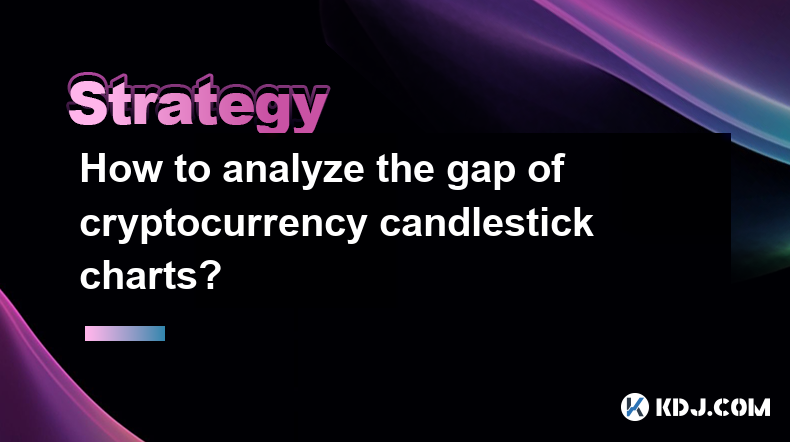
Understanding Gaps in Cryptocurrency Candlestick Charts
Candlestick charts are a fundamental tool for analyzing cryptocurrency price movements. A gap, in this context, refers to a period where the price of a cryptocurrency opens at a significantly different level than the previous day's closing price, leaving a "hole" or gap in the chart. Understanding these gaps is crucial for identifying potential trading opportunities and understanding market sentiment. Different types of gaps can signify different market dynamics, requiring careful analysis before making any trading decisions. Ignoring these gaps can lead to missed opportunities or incorrect trading strategies.
Types of Gaps in Cryptocurrency Candlestick Charts
There are several types of gaps, each carrying a different implication:
Breakaway Gaps: These gaps occur at the beginning of a significant price trend. They often signal a breakout from a period of consolidation or a range-bound market. A strong move after a breakaway gap suggests a continuation of the trend.
Runaway Gaps (or Measuring Gaps): These gaps appear during a strong trend. They indicate an acceleration of the price movement in the direction of the existing trend. Runaway gaps often signal further price movement in the same direction.
Exhaustion Gaps: These gaps occur near the end of a strong price move. They often signal a temporary exhaustion of buying or selling pressure. An exhaustion gap is usually followed by a reversal or a significant slowdown in price movement.
Common Gaps: These gaps are less significant and often filled quickly. They are usually caused by overnight or weekend trading activity and don't necessarily indicate a significant change in market sentiment. Common gaps are generally less reliable indicators than other gap types.
Analyzing Gaps: A Step-by-Step Guide
Analyzing gaps requires a methodical approach:
Identify the type of gap: Determine whether the gap is a breakaway, runaway, exhaustion, or common gap. This will provide initial insights into its potential significance.
Consider the context: Analyze the surrounding price action. Look for patterns, support and resistance levels, and overall market sentiment.
Assess volume: Examine the trading volume accompanying the gap. High volume confirms the gap's significance, while low volume suggests it may be less reliable.
Look for confirmation: Don't rely solely on gaps. Look for confirmation signals, such as candlestick patterns or technical indicators, to reinforce the gap's implications.
Manage risk: Never enter a trade based solely on a gap. Always use appropriate risk management techniques, such as stop-loss orders, to protect your capital.
Interpreting Gap Significance in Different Market Contexts
The significance of a gap can vary depending on the overall market conditions. In a highly volatile market, gaps may be more frequent and less reliable indicators. In a quieter market, gaps might carry more weight. Consider the broader market trends and news events that might influence price action. Always correlate gap analysis with fundamental analysis for a more comprehensive understanding.
Gaps and Support/Resistance Levels
Gaps can often act as significant support or resistance levels in the future. If a price gap is not filled, it may become a future level of resistance (if it was an upward gap) or support (if it was a downward gap). Traders often watch these levels closely for potential entry or exit points. The failure of the price to break through these levels can signal a potential trend reversal.
False Gaps and Their Implications
Not all gaps are created equal. Some gaps may appear significant initially but are later filled, rendering the initial interpretation invalid. These are known as false gaps. Identifying false gaps requires careful observation and an understanding of market dynamics. A false gap can lead to inaccurate trading decisions, highlighting the need for cautious analysis.
Gaps and Technical Indicators
Combining gap analysis with technical indicators can provide a more robust trading strategy. Indicators such as moving averages, RSI, and MACD can help confirm or contradict the signals provided by gaps. Using multiple indicators increases the accuracy of your analysis and reduces the risk of false signals.
The Importance of Volume in Gap Analysis
Volume is a crucial factor in analyzing gaps. A large volume accompanying a gap confirms its significance, suggesting a strong underlying force driving the price movement. Conversely, a small volume gap may be less reliable and more prone to being filled. Always consider volume in conjunction with the type of gap to determine its validity.
Frequently Asked Questions
Q: What is the most reliable type of gap?
A: Breakaway gaps and exhaustion gaps are generally considered more reliable than runaway gaps or common gaps. However, the reliability of any gap depends heavily on the context and volume.
Q: How do I identify a false gap?
A: A false gap is usually identified when the price action retraces and fills the gap. This often happens when the initial price move lacks sufficient volume or is driven by short-term factors.
Q: Can gaps be used for both long and short positions?
A: Yes, gaps can be used to identify potential entries for both long (buying) and short (selling) positions depending on the type of gap and the overall market context. Breakaway gaps upwards suggest long positions, while downward gaps may signal short positions (depending on context and confirmation).
Q: Are gaps always significant?
A: No, not all gaps are significant. Common gaps, often resulting from overnight or weekend trading, are usually less significant and frequently filled quickly. The significance of a gap depends on its type, volume, and the overall market context.
Q: How can I improve my gap analysis skills?
A: Practice is key. Analyze historical candlestick charts, paying close attention to different gap types and their subsequent price movements. Backtesting trading strategies incorporating gap analysis can further refine your skills. Combine gap analysis with other technical indicators and fundamental analysis for a more holistic approach.
Disclaimer:info@kdj.com
The information provided is not trading advice. kdj.com does not assume any responsibility for any investments made based on the information provided in this article. Cryptocurrencies are highly volatile and it is highly recommended that you invest with caution after thorough research!
If you believe that the content used on this website infringes your copyright, please contact us immediately (info@kdj.com) and we will delete it promptly.
- Bitcoin, the digital currency and virtual payment system, has grown increasingly popular in recent years
- 2025-04-10 13:25:14
- Plasma Unveils Technical Features of Its Stablecoin-Specific Blockchain, Promising Fast and Efficient Global Transfers
- 2025-04-10 13:25:14
- Crypto Price Predictions Are Showing an Optimistic (Bullish) Trend
- 2025-04-10 13:20:13
- Bitcoin (BTC) Price Prediction: Will BTC Price Surge Past $90,000 in April?
- 2025-04-10 13:20:13
- GameStop joins the ranks of virtual asset investors, its stock price jumped more than 8%
- 2025-04-10 13:15:13
- The Best Crypto Presale to Invest in 2025
- 2025-04-10 13:15:13
Related knowledge
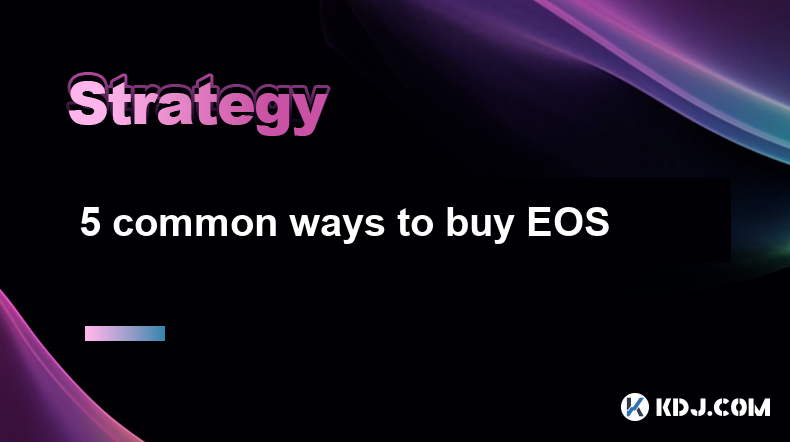
5 common ways to buy EOS
Apr 10,2025 at 01:14am
When it comes to purchasing EOS, one of the prominent cryptocurrencies in the blockchain ecosystem, there are several methods you can use. Each method has its own set of advantages and considerations. In this article, we will explore five common ways to buy EOS, providing a detailed guide on how to navigate each option effectively. Using Cryptocurrency ...
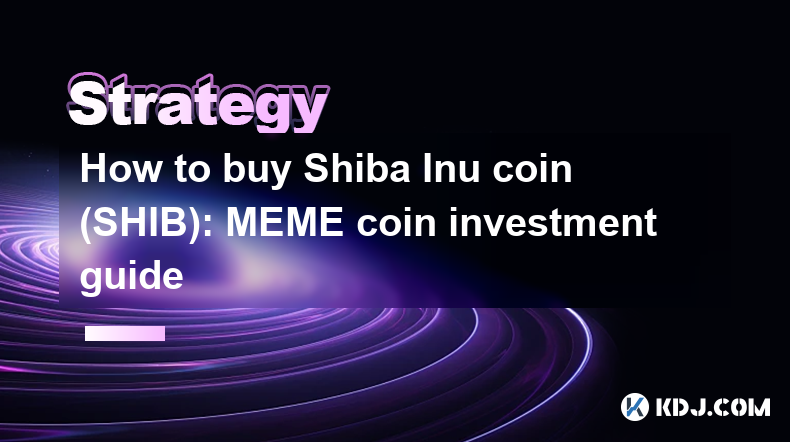
How to buy Shiba Inu coin (SHIB): MEME coin investment guide
Apr 10,2025 at 07:42am
Buying Shiba Inu coin (SHIB), a popular meme coin, can be an exciting venture into the world of cryptocurrency. This guide will walk you through the steps to purchase SHIB, provide insights into the coin's background, and offer tips on managing your investment. Whether you're a seasoned crypto investor or a newcomer, understanding how to buy and manage ...

How to buy Cardano (ADA): The latest buying tutorial for 2025
Apr 09,2025 at 01:21am
Introduction to Cardano (ADA)Cardano (ADA) is a blockchain platform that aims to provide a more secure and scalable infrastructure for the development of decentralized applications and smart contracts. Created by Charles Hoskinson, one of the co-founders of Ethereum, Cardano differentiates itself through its rigorous academic approach and peer-reviewed ...
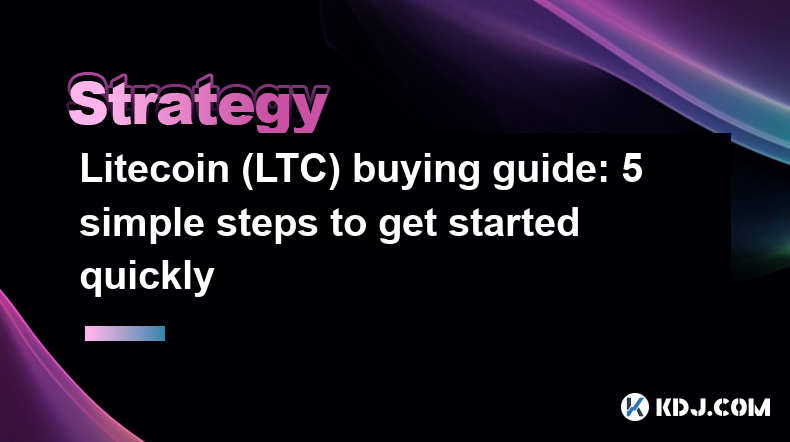
Litecoin (LTC) buying guide: 5 simple steps to get started quickly
Apr 09,2025 at 07:21pm
Litecoin (LTC) is a popular cryptocurrency that was created as a fork of Bitcoin. It offers faster transaction times and lower fees, making it an attractive option for many users. If you're interested in buying Litecoin, this guide will walk you through the process in five simple steps. Let's get started. Step 1: Choose a Reliable Cryptocurrency Exchang...
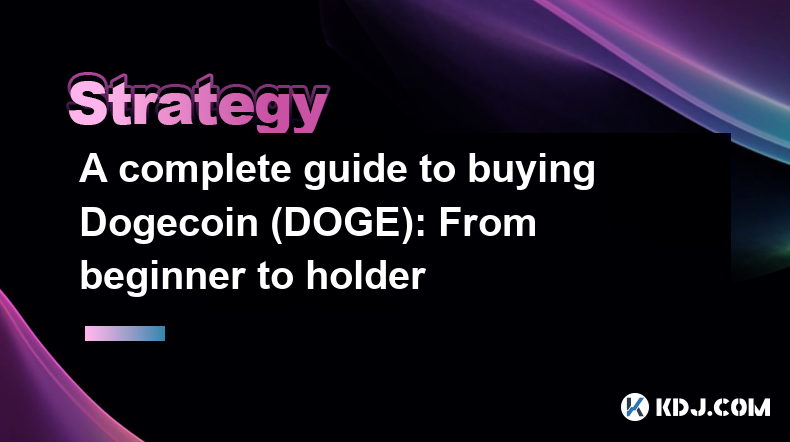
A complete guide to buying Bitcoincoin (Bitcoin): From beginner to holder
Apr 10,2025 at 12:56pm
Dogecoin (DOGE) started as a meme cryptocurrency but has grown to become one of the most popular digital assets in the market. If you're a beginner looking to invest in DOGE, this guide will walk you through the entire process, from understanding what Dogecoin is to becoming a holder. Let's dive in. What is Dogecoin?Dogecoin is a cryptocurrency ...

How to buy Ethereum (ETH): A 3-minute tutorial for beginners
Apr 10,2025 at 03:01am
Buying Ethereum (ETH) can be an exciting first step into the world of cryptocurrencies. This tutorial is designed to guide beginners through the process in just three minutes, ensuring you can start your crypto journey with confidence. Let's dive into the steps you need to follow to purchase Ethereum. Choosing a Cryptocurrency ExchangeThe first step in ...

5 common ways to buy EOS
Apr 10,2025 at 01:14am
When it comes to purchasing EOS, one of the prominent cryptocurrencies in the blockchain ecosystem, there are several methods you can use. Each method has its own set of advantages and considerations. In this article, we will explore five common ways to buy EOS, providing a detailed guide on how to navigate each option effectively. Using Cryptocurrency ...

How to buy Shiba Inu coin (SHIB): MEME coin investment guide
Apr 10,2025 at 07:42am
Buying Shiba Inu coin (SHIB), a popular meme coin, can be an exciting venture into the world of cryptocurrency. This guide will walk you through the steps to purchase SHIB, provide insights into the coin's background, and offer tips on managing your investment. Whether you're a seasoned crypto investor or a newcomer, understanding how to buy and manage ...

How to buy Cardano (ADA): The latest buying tutorial for 2025
Apr 09,2025 at 01:21am
Introduction to Cardano (ADA)Cardano (ADA) is a blockchain platform that aims to provide a more secure and scalable infrastructure for the development of decentralized applications and smart contracts. Created by Charles Hoskinson, one of the co-founders of Ethereum, Cardano differentiates itself through its rigorous academic approach and peer-reviewed ...

Litecoin (LTC) buying guide: 5 simple steps to get started quickly
Apr 09,2025 at 07:21pm
Litecoin (LTC) is a popular cryptocurrency that was created as a fork of Bitcoin. It offers faster transaction times and lower fees, making it an attractive option for many users. If you're interested in buying Litecoin, this guide will walk you through the process in five simple steps. Let's get started. Step 1: Choose a Reliable Cryptocurrency Exchang...

A complete guide to buying Bitcoincoin (Bitcoin): From beginner to holder
Apr 10,2025 at 12:56pm
Dogecoin (DOGE) started as a meme cryptocurrency but has grown to become one of the most popular digital assets in the market. If you're a beginner looking to invest in DOGE, this guide will walk you through the entire process, from understanding what Dogecoin is to becoming a holder. Let's dive in. What is Dogecoin?Dogecoin is a cryptocurrency ...

How to buy Ethereum (ETH): A 3-minute tutorial for beginners
Apr 10,2025 at 03:01am
Buying Ethereum (ETH) can be an exciting first step into the world of cryptocurrencies. This tutorial is designed to guide beginners through the process in just three minutes, ensuring you can start your crypto journey with confidence. Let's dive into the steps you need to follow to purchase Ethereum. Choosing a Cryptocurrency ExchangeThe first step in ...
See all articles





















































































